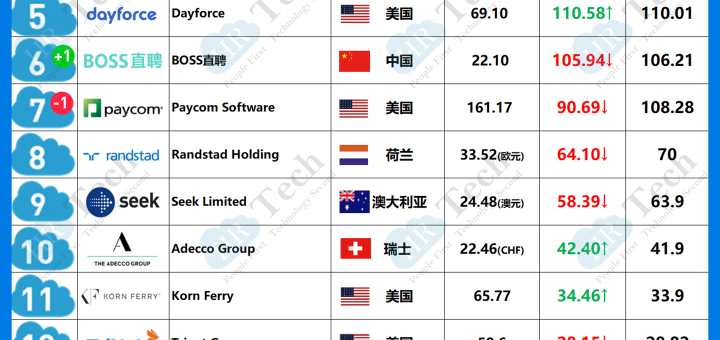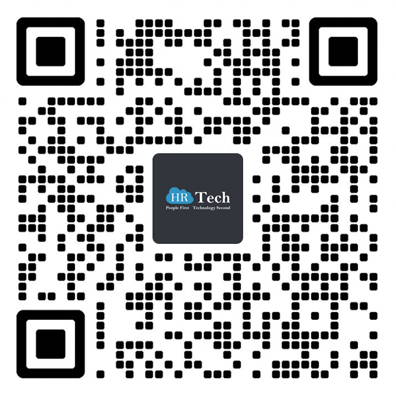-
 降低离职率
【西班牙】人力资源科技公司Orbio获得640万欧元融资,推出首个原生AI系统 马德里初创企业Orbio通过人工智能革新人力资源领域,公司完成640万欧元融资,将加速推出“全球首个原生人工智能人力资本管理系统”。 本轮融资由Visionaries Club领投,该机构继前期投资后再度加码,Plus Partners、Enzo Ventures和2100 Ventures共同参与。 “我们自豪地打造了首个原生AI系统,以前所未有的方式为人力资源领域注入自动化、智能化与高效性,”Orbio首席执行官兼联合创始人塞尔吉·巴斯塔达斯表示,“当前企业招聘耗时数月,因行动迟缓错失顶尖人才,更在无价值事务上浪费大量时间。Orbio将彻底改变这一现状。” Orbio平台整合了全天候运作的自主对话式智能代理,全面管理员工生命周期——从招聘入职到培养留任。通过自动化处理通常压垮人力资源部门的流程,Orbio使团队得以从行政事务中解放出来,真正成为企业内部的战略合作伙伴与增长引擎。 该平台由Sergi Bastardas(首席执行官,Colvin前创始人)、 纳乔·特拉维西(首席营收官,Cobee联合创始人,曾成功退出)与安东尼奥·梅莱(首席技术官,Nucoro创始人兼前首席技术官)共同创立,短短三个月内已为AT&T、Vicio、Honest Greens、Verisure等大型雇主完成逾60,000场候选人面试。 客户反馈显示: 招聘周期缩短80%,助力企业抢先竞争对手锁定人才。 入职前20天内早期离职率降低20%。 面试全流程候选人满意度达99%。 “这些成果印证了我们的信念:Orbio的原生AI方案有望重塑人力资源管理范式,”Bastardas补充道,“通过融合速度、精准度与数据驱动决策,我们正打造企业吸引、培养和留住人才所需的战略伙伴。” 新一轮融资将加速Orbio的产品开发、商业增长及全球扩张。公司计划进军欧洲和拉丁美洲新市场,同时深化在西班牙、葡萄牙、墨西哥、英国、意大利和美国等现有市场的布局。 Orbio还将扩充人工智能专家团队,并组建顾问委员会以支持国际化发展。 Orbio此轮融资是今年欧洲人力资源及工作场所领域一系列重大投资的最新案例。就在昨日,办公管理平台deskbird刚完成1900万欧元融资。今年早些时候,Skillvue为技能型招聘筹集550万欧元,Shyfter获150万欧元用于扩展排班解决方案,Shakers则为其人工智能驱动的人才匹配平台吸引1400万欧元投资。 大型企业同样获得资金支持,Factorial通过额外融资1.1亿欧元巩固了独角兽地位。这些消息共同表明,投资者持续青睐能够覆盖员工生命周期各阶段的软件解决方案——从招聘排班到福利留任。 Visionaries Club投资人Isabella Yamamoto指出:"传统人力资源管理长期依赖分散的点解决方案,既无法覆盖完整工作流程,又带来沉重的后台负担。我们注意到首席人力资源官们正寻求新一代HCM系统,以消除工具切换需求、实现数据捕获和真正自动化工作。Orbio正从招聘环节着手解决这一痛点。凭借团队深厚的人力资源专业知识,公司成立仅四个月便已与全球多家大型企业展开合作。" Orbio获得来自关键市场的天使投资人及顾问委员会支持,成员包括人力资源科技领域的专家:菲尔·钱伯斯(前Workday首席运营官、Peakon创始人)、博尔哈·阿兰古伦(Cobee创始人)、卡洛斯·费尔南德斯·埃尔维罗(前JobandTalent首席运营官/现Docplanner首席运营官)、蒂亚戈·佩索阿(Wellhub创始团队成员)。 关于Orbio Orbio是一家人工智能原生系统公司,致力于帮助企业打造动态人才体系、消除重复性工作并创造商业价值。降低离职率2025年09月28日
降低离职率
【西班牙】人力资源科技公司Orbio获得640万欧元融资,推出首个原生AI系统 马德里初创企业Orbio通过人工智能革新人力资源领域,公司完成640万欧元融资,将加速推出“全球首个原生人工智能人力资本管理系统”。 本轮融资由Visionaries Club领投,该机构继前期投资后再度加码,Plus Partners、Enzo Ventures和2100 Ventures共同参与。 “我们自豪地打造了首个原生AI系统,以前所未有的方式为人力资源领域注入自动化、智能化与高效性,”Orbio首席执行官兼联合创始人塞尔吉·巴斯塔达斯表示,“当前企业招聘耗时数月,因行动迟缓错失顶尖人才,更在无价值事务上浪费大量时间。Orbio将彻底改变这一现状。” Orbio平台整合了全天候运作的自主对话式智能代理,全面管理员工生命周期——从招聘入职到培养留任。通过自动化处理通常压垮人力资源部门的流程,Orbio使团队得以从行政事务中解放出来,真正成为企业内部的战略合作伙伴与增长引擎。 该平台由Sergi Bastardas(首席执行官,Colvin前创始人)、 纳乔·特拉维西(首席营收官,Cobee联合创始人,曾成功退出)与安东尼奥·梅莱(首席技术官,Nucoro创始人兼前首席技术官)共同创立,短短三个月内已为AT&T、Vicio、Honest Greens、Verisure等大型雇主完成逾60,000场候选人面试。 客户反馈显示: 招聘周期缩短80%,助力企业抢先竞争对手锁定人才。 入职前20天内早期离职率降低20%。 面试全流程候选人满意度达99%。 “这些成果印证了我们的信念:Orbio的原生AI方案有望重塑人力资源管理范式,”Bastardas补充道,“通过融合速度、精准度与数据驱动决策,我们正打造企业吸引、培养和留住人才所需的战略伙伴。” 新一轮融资将加速Orbio的产品开发、商业增长及全球扩张。公司计划进军欧洲和拉丁美洲新市场,同时深化在西班牙、葡萄牙、墨西哥、英国、意大利和美国等现有市场的布局。 Orbio还将扩充人工智能专家团队,并组建顾问委员会以支持国际化发展。 Orbio此轮融资是今年欧洲人力资源及工作场所领域一系列重大投资的最新案例。就在昨日,办公管理平台deskbird刚完成1900万欧元融资。今年早些时候,Skillvue为技能型招聘筹集550万欧元,Shyfter获150万欧元用于扩展排班解决方案,Shakers则为其人工智能驱动的人才匹配平台吸引1400万欧元投资。 大型企业同样获得资金支持,Factorial通过额外融资1.1亿欧元巩固了独角兽地位。这些消息共同表明,投资者持续青睐能够覆盖员工生命周期各阶段的软件解决方案——从招聘排班到福利留任。 Visionaries Club投资人Isabella Yamamoto指出:"传统人力资源管理长期依赖分散的点解决方案,既无法覆盖完整工作流程,又带来沉重的后台负担。我们注意到首席人力资源官们正寻求新一代HCM系统,以消除工具切换需求、实现数据捕获和真正自动化工作。Orbio正从招聘环节着手解决这一痛点。凭借团队深厚的人力资源专业知识,公司成立仅四个月便已与全球多家大型企业展开合作。" Orbio获得来自关键市场的天使投资人及顾问委员会支持,成员包括人力资源科技领域的专家:菲尔·钱伯斯(前Workday首席运营官、Peakon创始人)、博尔哈·阿兰古伦(Cobee创始人)、卡洛斯·费尔南德斯·埃尔维罗(前JobandTalent首席运营官/现Docplanner首席运营官)、蒂亚戈·佩索阿(Wellhub创始团队成员)。 关于Orbio Orbio是一家人工智能原生系统公司,致力于帮助企业打造动态人才体系、消除重复性工作并创造商业价值。降低离职率2025年09月28日 -
 降低离职率
【HR术语】什么是工作充实?(What is job enrichment?) 什么是工作充实? 工作丰富化是一种激励策略,其重点是使人们从事的工作更有价值、更令人满意。更具体地说,工作丰富化为个人成就提供了更大的空间、更具挑战性的工作、更多的责任以及个人成长和发展的机会。 我们都希望对自己所从事的工作感觉良好,但只有 15%的人对自己的工作感到投入。这就是工作丰富化发挥重要作用的地方,它能让团队成员更快乐、更有动力。 工作丰富化的例子 人们喜欢挑战、被接受和被重视的感觉。人力资源经理需要采取正确的工作充实策略来持续促进这种感觉,从而培养职场参与度。 那么,该从哪里入手呢?有帮助的是,这些策略可分为四大类和技巧: 增加职位的难度和责任。例如,可以让团队成员在日常工作中拥有更多的自主权或控制权。 增加需要新技能的新任务。这将有助于增加角色的趣味性,促进团队成员的专业和个人发展。 让团队成员参与决策过程。这应该与团队成员的工作或部门相关,能让他们感觉到自己在工作中更有价值、更投入。 提供培训机会,促进职业发展。这样,员工就能在现有技能的基础上更上一层楼,避免停滞不前。 工作丰富化和工作扩大化有什么区别? 工作充实和工作扩展这两个词经常被混淆。我们知道,工作充实是指让工作变得更有趣、更有挑战性、更有回报--其中大部分涉及在工作中增加更有意义的任务。 然而,工作扩大化是指增加工作的广度,增加更多难度或技能水平相似的任务。这被认为是纵向的工作扩展,即在某一技能范围内增加职责,从而减少无聊感,但并不一定能提高工作积极性。 从本质上讲,这两种策略都是为了提高工作满意度,但工作丰富化是通过使工作更复杂、更有价值来实现的,而工作扩大化只是使工作更多样化。 工作丰富化有哪些好处? 以下是丰富工作内容能改善员工体验的好处: 提高工作满意度 当任务变得更加复杂、更有意义时,工作内容的丰富化会使工作更有满足感,从而使团队成员更加快乐,工作环境更加积极向上。 成功留住人才 对工作的满意度意味着你的优秀人才不太可能离开。这可以降低与高离职率相关的成本,也意味着企业在顶尖人才的掌舵下不断向前发展。 减少缺勤 美国雇主每年每小时员工的旷工成本为 3,600 美元。因此,当团队成员有参与感时,他们就会更加投入、更有动力,并随时准备投入最佳工作。 继任规划和职业发展 对员工提出挑战意味着你可以看到他们真正的潜力和能力。大家都知道,从公司内部招聘人才的成本效益要高得多,而丰富工作内容则是一种简便的方法,可以让你感觉到哪些人非常适合在未来担任更高级别的职位。 授权带来生产力 当人们感到自己有能力时,生产力就会开始飙升。授权有助于建立自尊,而自尊来自于自主、信任和责任。 工作丰富化有哪些挑战? 工作丰富化有很多好处,但与任何事情一样,它也伴随着潜在的挑战: 技能组合错位。新的任务和职责必须与团队成员的职业目标相一致。如果团队成员对复杂的任务不感兴趣,或者根本就不在自己的技能范围内,就会导致不满情绪的产生。 增加工作量。如果管理不当,工作丰富化可能会造成任务超负荷,从而导致倦怠。关键是要为员工提供资源和支持,以应对增加的责任。 需要培训和支持。承担新的技能和复杂的任务可能意味着团队成员需要额外的培训和持续的支持。这就需要对预算和资源管理进行细致的前瞻性观察,以确保培训成本不会飙升。 人力资源技术如何帮助丰富工作内容? 人力资源技术可以成为工作丰富化道路上的盟友。它可以帮助识别员工的优势和能力,使他们更容易匹配具有挑战性和满足感的任务和角色。反过来,这也可以通过识别准备好进行角色转换的人员,支持继任规划和职业发展。 提供反馈和认可空间的人力资源平台是工作丰富化的一个关键部分,尤其是在人们追求新技能和接受挑战的时候。为同事点赞是一种很好的激励方式,能让人们对自己的工作感到满意。 与此同时,人力资源平台还可以提供反馈功能,如员工满意度调查。这可以让您监测工作丰富化的效果如何,以及哪些方面需要改变。 以下为文章原文: What is job enrichment? Job enrichment is a motivational strategy that focuses on making the work people do more rewarding and satisfying. More specifically, job enrichment gives greater scope for personal achievement, more challenging work, more responsibility, and the opportunity for personal growth and development. We all want to feel good about the work we’re doing, yet only 15% of people feel engaged with their work. This is where job enrichment plays a vital role, leading to happier, more motivated team members. Examples of job enrichment People like to feel challenged, accepted, and valued. HR managers need to adopt the right job enrichment strategies to facilitate this on an ongoing basis, so they can nurture workplace engagement. So, where to start? Helpfully, these strategies fall into four main categories and techniques: Increasing the level of difficulty and responsibility of a role. This could involve giving a team member more autonomy or control over their day-to-day tasks, for example. Adding new tasks that require new skills. This will help make the role more interesting and add to the team member’s professional and personal development. Making team members part of the decision-making process. This should be related to their job or department and can help people feel more valued and invested in their work. Offering training opportunities to propel career development. So people can build on their existing skillset and stop stagnation from creeping in. What’s the difference between job enrichment and job enlargement? Job enrichment and job enlargement are terms that often get confused. We know that job enrichment is about making a job more interesting, challenging, and rewarding—and much of this involves adding more meaningful tasks into the mix. However, job enlargement involves ramping up the breadth of a job and adding more tasks of a similar level of difficulty or skill. It’s thought of as vertical job expansion, where adding responsibilities within a skillset reduces boredom but doesn’t necessarily increase motivation. In essence, both strategies aim to increase job satisfaction, but job enrichment does it by making a job more complex and rewarding, while job enlargement simply makes a job more varied. What are the benefits of job enrichment? Here are the benefits of job enrichment that will improve the employee experience: Greater job satisfaction When tasks are more complex and meaningful, job enrichment makes the job more satisfying—and you get happier team members and a more positive working environment as a result. Success with retaining talent Satisfaction in a job means your top talent will be less likely to leave. This can reduce the costs that are linked with high turnover rates, and also means that the business keeps moving forward with top talent at the helm. Reduced absenteeism Absenteeism costs U.S. employers $3,600 per hourly employee per year. It makes sense that when team members feel engaged they will be more present, more motivated, and turn up ready to do their best work. Succession planning and career pathing Challenging people means you can see their true potential and capabilities emerge. As you know, it’s far more cost-effective to recruit from within your company—and job enrichment is an easy way to sense-check who would be a great fit for higher-level roles in the future. Empowerment leads to productivity When people feel empowered, productivity starts to soar. Empowerment helps to build self-esteem, which springs from autonomy, trust, and responsibility. What are the challenges with job enrichment? Job enrichment comes with many benefits, but—like everything—it comes with potential challenges: A misalignment of skillsets. It’s important that new tasks and responsibilities are in line with a team member’s career goals. Loading on complex tasks that aren’t of interest, or simply aren’t within a person’s skillset can actually lead to dissatisfaction. Increased workload. When not managed properly, job enrichment can cause an overload of tasks that could result in burnout. It’s key that employees are given the resources and support to handle the increased responsibility. A need for training and support. Taking on new skills and complex tasks may mean a team member needs extra training and ongoing support. This will need careful foresight to watch over budget and resource management to make sure training costs don’t spiral. How can HR tech help with job enrichment? HR tech can be an ally on the road to job enrichment. It can help identify the strengths and abilities of employees, making it easier to match them with tasks and roles that are challenging and satisfying. In turn, this can also support succession planning and career pathing by identifying the people who are ready for a role shift. An HR platform that gives space for feedback and recognition is a key part of job enrichment, especially as people are reaching for new skillsets and taking on challenges. Giving kudos to colleagues can be a great way to motivate and make people feel good about their work. Alongside this, HR platforms can offer a feedback feature such as an employee satisfaction survey. This lets you monitor how well job enrichment is working—and what needs to change.降低离职率2024年03月19日
降低离职率
【HR术语】什么是工作充实?(What is job enrichment?) 什么是工作充实? 工作丰富化是一种激励策略,其重点是使人们从事的工作更有价值、更令人满意。更具体地说,工作丰富化为个人成就提供了更大的空间、更具挑战性的工作、更多的责任以及个人成长和发展的机会。 我们都希望对自己所从事的工作感觉良好,但只有 15%的人对自己的工作感到投入。这就是工作丰富化发挥重要作用的地方,它能让团队成员更快乐、更有动力。 工作丰富化的例子 人们喜欢挑战、被接受和被重视的感觉。人力资源经理需要采取正确的工作充实策略来持续促进这种感觉,从而培养职场参与度。 那么,该从哪里入手呢?有帮助的是,这些策略可分为四大类和技巧: 增加职位的难度和责任。例如,可以让团队成员在日常工作中拥有更多的自主权或控制权。 增加需要新技能的新任务。这将有助于增加角色的趣味性,促进团队成员的专业和个人发展。 让团队成员参与决策过程。这应该与团队成员的工作或部门相关,能让他们感觉到自己在工作中更有价值、更投入。 提供培训机会,促进职业发展。这样,员工就能在现有技能的基础上更上一层楼,避免停滞不前。 工作丰富化和工作扩大化有什么区别? 工作充实和工作扩展这两个词经常被混淆。我们知道,工作充实是指让工作变得更有趣、更有挑战性、更有回报--其中大部分涉及在工作中增加更有意义的任务。 然而,工作扩大化是指增加工作的广度,增加更多难度或技能水平相似的任务。这被认为是纵向的工作扩展,即在某一技能范围内增加职责,从而减少无聊感,但并不一定能提高工作积极性。 从本质上讲,这两种策略都是为了提高工作满意度,但工作丰富化是通过使工作更复杂、更有价值来实现的,而工作扩大化只是使工作更多样化。 工作丰富化有哪些好处? 以下是丰富工作内容能改善员工体验的好处: 提高工作满意度 当任务变得更加复杂、更有意义时,工作内容的丰富化会使工作更有满足感,从而使团队成员更加快乐,工作环境更加积极向上。 成功留住人才 对工作的满意度意味着你的优秀人才不太可能离开。这可以降低与高离职率相关的成本,也意味着企业在顶尖人才的掌舵下不断向前发展。 减少缺勤 美国雇主每年每小时员工的旷工成本为 3,600 美元。因此,当团队成员有参与感时,他们就会更加投入、更有动力,并随时准备投入最佳工作。 继任规划和职业发展 对员工提出挑战意味着你可以看到他们真正的潜力和能力。大家都知道,从公司内部招聘人才的成本效益要高得多,而丰富工作内容则是一种简便的方法,可以让你感觉到哪些人非常适合在未来担任更高级别的职位。 授权带来生产力 当人们感到自己有能力时,生产力就会开始飙升。授权有助于建立自尊,而自尊来自于自主、信任和责任。 工作丰富化有哪些挑战? 工作丰富化有很多好处,但与任何事情一样,它也伴随着潜在的挑战: 技能组合错位。新的任务和职责必须与团队成员的职业目标相一致。如果团队成员对复杂的任务不感兴趣,或者根本就不在自己的技能范围内,就会导致不满情绪的产生。 增加工作量。如果管理不当,工作丰富化可能会造成任务超负荷,从而导致倦怠。关键是要为员工提供资源和支持,以应对增加的责任。 需要培训和支持。承担新的技能和复杂的任务可能意味着团队成员需要额外的培训和持续的支持。这就需要对预算和资源管理进行细致的前瞻性观察,以确保培训成本不会飙升。 人力资源技术如何帮助丰富工作内容? 人力资源技术可以成为工作丰富化道路上的盟友。它可以帮助识别员工的优势和能力,使他们更容易匹配具有挑战性和满足感的任务和角色。反过来,这也可以通过识别准备好进行角色转换的人员,支持继任规划和职业发展。 提供反馈和认可空间的人力资源平台是工作丰富化的一个关键部分,尤其是在人们追求新技能和接受挑战的时候。为同事点赞是一种很好的激励方式,能让人们对自己的工作感到满意。 与此同时,人力资源平台还可以提供反馈功能,如员工满意度调查。这可以让您监测工作丰富化的效果如何,以及哪些方面需要改变。 以下为文章原文: What is job enrichment? Job enrichment is a motivational strategy that focuses on making the work people do more rewarding and satisfying. More specifically, job enrichment gives greater scope for personal achievement, more challenging work, more responsibility, and the opportunity for personal growth and development. We all want to feel good about the work we’re doing, yet only 15% of people feel engaged with their work. This is where job enrichment plays a vital role, leading to happier, more motivated team members. Examples of job enrichment People like to feel challenged, accepted, and valued. HR managers need to adopt the right job enrichment strategies to facilitate this on an ongoing basis, so they can nurture workplace engagement. So, where to start? Helpfully, these strategies fall into four main categories and techniques: Increasing the level of difficulty and responsibility of a role. This could involve giving a team member more autonomy or control over their day-to-day tasks, for example. Adding new tasks that require new skills. This will help make the role more interesting and add to the team member’s professional and personal development. Making team members part of the decision-making process. This should be related to their job or department and can help people feel more valued and invested in their work. Offering training opportunities to propel career development. So people can build on their existing skillset and stop stagnation from creeping in. What’s the difference between job enrichment and job enlargement? Job enrichment and job enlargement are terms that often get confused. We know that job enrichment is about making a job more interesting, challenging, and rewarding—and much of this involves adding more meaningful tasks into the mix. However, job enlargement involves ramping up the breadth of a job and adding more tasks of a similar level of difficulty or skill. It’s thought of as vertical job expansion, where adding responsibilities within a skillset reduces boredom but doesn’t necessarily increase motivation. In essence, both strategies aim to increase job satisfaction, but job enrichment does it by making a job more complex and rewarding, while job enlargement simply makes a job more varied. What are the benefits of job enrichment? Here are the benefits of job enrichment that will improve the employee experience: Greater job satisfaction When tasks are more complex and meaningful, job enrichment makes the job more satisfying—and you get happier team members and a more positive working environment as a result. Success with retaining talent Satisfaction in a job means your top talent will be less likely to leave. This can reduce the costs that are linked with high turnover rates, and also means that the business keeps moving forward with top talent at the helm. Reduced absenteeism Absenteeism costs U.S. employers $3,600 per hourly employee per year. It makes sense that when team members feel engaged they will be more present, more motivated, and turn up ready to do their best work. Succession planning and career pathing Challenging people means you can see their true potential and capabilities emerge. As you know, it’s far more cost-effective to recruit from within your company—and job enrichment is an easy way to sense-check who would be a great fit for higher-level roles in the future. Empowerment leads to productivity When people feel empowered, productivity starts to soar. Empowerment helps to build self-esteem, which springs from autonomy, trust, and responsibility. What are the challenges with job enrichment? Job enrichment comes with many benefits, but—like everything—it comes with potential challenges: A misalignment of skillsets. It’s important that new tasks and responsibilities are in line with a team member’s career goals. Loading on complex tasks that aren’t of interest, or simply aren’t within a person’s skillset can actually lead to dissatisfaction. Increased workload. When not managed properly, job enrichment can cause an overload of tasks that could result in burnout. It’s key that employees are given the resources and support to handle the increased responsibility. A need for training and support. Taking on new skills and complex tasks may mean a team member needs extra training and ongoing support. This will need careful foresight to watch over budget and resource management to make sure training costs don’t spiral. How can HR tech help with job enrichment? HR tech can be an ally on the road to job enrichment. It can help identify the strengths and abilities of employees, making it easier to match them with tasks and roles that are challenging and satisfying. In turn, this can also support succession planning and career pathing by identifying the people who are ready for a role shift. An HR platform that gives space for feedback and recognition is a key part of job enrichment, especially as people are reaching for new skillsets and taking on challenges. Giving kudos to colleagues can be a great way to motivate and make people feel good about their work. Alongside this, HR platforms can offer a feedback feature such as an employee satisfaction survey. This lets you monitor how well job enrichment is working—and what needs to change.降低离职率2024年03月19日
最近文章
-
 【美国】医疗保险服务提供商Curative获得1.5亿美元B轮融资,以重新定义健康保险的未来 2025年12月03日
【美国】医疗保险服务提供商Curative获得1.5亿美元B轮融资,以重新定义健康保险的未来 2025年12月03日 -
 【纽约】初创的AI面试公司 lizzyAI 完成 500 万美元种子轮融资 2025年12月03日
【纽约】初创的AI面试公司 lizzyAI 完成 500 万美元种子轮融资 2025年12月03日 -

-
 AI评绩效:比人类更公正? 2025年12月02日
AI评绩效:比人类更公正? 2025年12月02日 -
 AI招聘的四大真相:为何真正的颠覆与你想象的截然相反 2025年12月02日
AI招聘的四大真相:为何真正的颠覆与你想象的截然相反 2025年12月02日
热门文章
那年今日
- 般若虾:智慧创造价值,想做中高端脑力兼职平台 2015年12月16日
- 在线教育行业“大众点评”多学,获500万元天使投资 2014年12月16日
- 未来视野:AI与DEI的协同进化 2024年12月16日
- 【资讯】GoGlobal 分享2023年远程工作预测,混合工作及跨境招聘将使公司在2023年的人才竞争中占据一席之地 2022年12月16日
- 在线教育网站阿凡题获B轮6000万美元融资 2015年12月16日
 扫一扫 加微信
hrtechchina
扫一扫 加微信
hrtechchina

